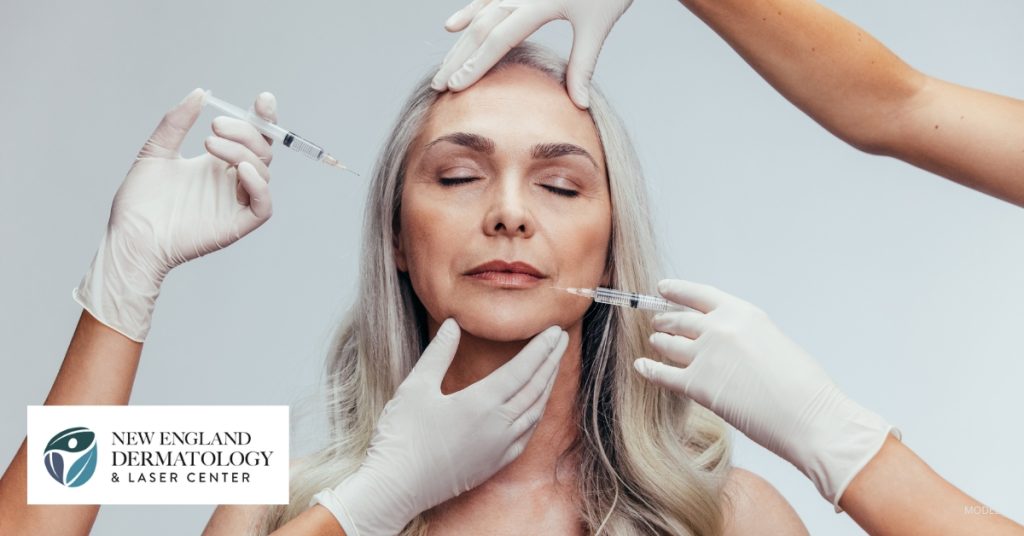Dermal fillers and BOTOX are highly regarded injectable anti-aging treatments, but each has a distinct approach suited to different types of wrinkles. Understanding how the products work and the benefits of dermal fillers vs. BOTOX can help you make an informed choice that suits your needs and aesthetic goals.
Read on to learn about the 2 types of wrinkles—dynamic and static—and how each of these celebrated treatments works its magic.
What Are Dynamic Wrinkles?
Dynamic wrinkles are the lines that appear when we make facial expressions, such as smiling or frowning. Over time, these repeated expressions cause the skin to crease and fold, eventually causing permanent lines that are visible even when your face is at rest. BOTOX effectively treats these types of wrinkles.
How Does BOTOX Work?
BOTOX is a neuromodulator that temporarily relaxes the muscles responsible for dynamic wrinkles. By blocking the nerve signals to these muscles, BOTOX allows the skin to smooth out, giving you a refreshed, more youthful appearance. It’s an ideal solution for expression lines like crow’s feet, forehead lines, and the “11” lines between the eyebrows.
Treatments usually take about 15 minutes and require little or no downtime. You may start to notice a smoothing of your expression lines as early as 1 to 2 days after treatment, but results may take up to a few weeks to fully materialize.
How Long Does BOTOX Last?
The effects of BOTOX typically last 3 to 4 months. The duration depends on several factors, including the area treated, the amount of product used, and your metabolism. You can maintain your results with periodic touch-up treatments.
What Are Static Wrinkles?
Static wrinkles differ from their dynamic counterparts because they’re visible even when the face is at rest. These wrinkles result from the collagen depletion and loss of skin elasticity that occurs with the natural aging process. Dermal fillers are the treatment of choice for these types of wrinkles.
How Do Dermal Fillers Work?
Dermal fillers, as the name suggests, fill in the areas that have lost volume and smoothness. They can soften facial creases such as nasolabial folds and marionette lines, remove wrinkles, enhance contours, and plump thinning lips. Like BOTOX, treatments are quick and require little or no downtime. With hyaluronic acid-based fillers, you should notice immediate improvement in facial creases, but results will continue to develop as the fillers settle fully into place.
How Long Do Dermal Fillers Last?
The longevity of dermal fillers varies between 6 to 18 months based on the type used, the area treated, and individual factors such as metabolism and lifestyle. As with BOTOX, you can maintain your results with touch-up treatments as needed.
Choosing Between Dermal Fillers and BOTOX
Consider the type of wrinkles you want to address and your desired results when deciding between dermal fillers and BOTOX. Pairing the treatments softens dynamic wrinkles and improves volume loss for comprehensive anti-aging results.
Take the Next Step
If you’re considering BOTOX or dermal fillers, the knowledgeable team at New England Dermatology & Laser Center is here to guide you. We’ll work with you to create a customized treatment plan focused on your aesthetic goals and concerns. We invite you to call our office at (413) 733-9600 or request a consultation.

Leave a Reply